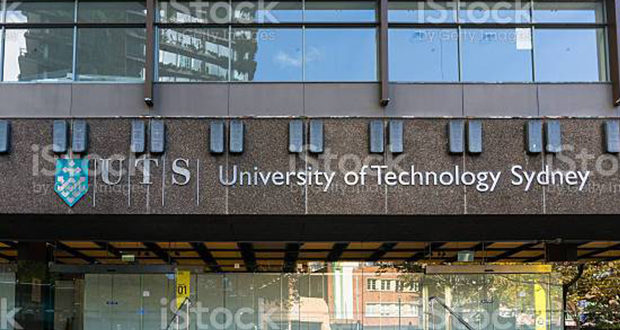The University of Technology Sydney (UTS) has entered the THE Young University Rankings 2021 top ten for the first time, with a number of other Australian universities recording top-50 spots.
UTS’ position has risen six places since last year’s Young University Rankings, registering a particularly high score (97) in international outlook (one of the key performance indicators). Other young Australian universities (aged 50 years or younger) to secure a top-50 ranking include:
- The University of Canberra - up from 18th in 2020 to 16th.
- Queensland University of Technology (QUT) - down from 14th in 2020 to 17th.
- Griffith University - up one from 30 last year to 29th.
- Western Sydney University - up from =36th in 2020 to 34th.
- Curtin University - down from =34th in 2020 to 35th.
- Australian Catholic University - up significantly from 70th in 2020 to 42nd.
- University of South Australia (UniSA) - down significantly from 25th in 2020 to =45th.
- Deakin University - up from 55 in 2020 to 49.
In total, nine Australian universities achieved top-50 positions, and many also secured top-100 spots.
UTS vice-chancellor Professor Attila Brungs said “being placed among the world’s best young universities was a milestone, but more as recognition of a fruitful decade of effort by the UTS community”.
“We have come a long way very quickly, but we know we’re likely to see considerable change and disruption to higher education and the future workforce in Australia and globally,” she said.
“However, what will always remain constant is our role as a public university supporting society, through our teaching, research and engagement.”
UOW attributed excellent research citation scores and improvements in its research and teaching reputation scores to elevating its rank this year. UOW also cited its achievement in the recent THE Impact Rankings, where it was ranked 6th globally for its “commitment to achieving the UN Sustainable Development Goals”.
UOW vice-chancellor Professor Patricia Davidson said the latest rankings acknowledge the university’s work as a leading research-intensive university.
“These rankings are a direct indication of UOW’s research, teaching and innovation work done by our talented academics and researchers,” Davidson said.
“UOW will continue its focus on making progress through strategic partnerships, cutting-edge innovation and providing a world class learning and teaching environment.”
Vice-chancellor and President Professor Carolyn Evans of Griffith University said "in challenging times all universities must focus on their core values".
“More than a year since the start of the pandemic, it is wonderful to see students active on our campuses,” Evans said.
“We are delighted by this lift in our ranking which recognises the exceptional learning, teaching and research opportunities we provide and reinforces our impact in creating a better future.
“Since we started teaching over 40 years ago, we’ve been deeply connected to the Asian region, socially conscious and environmentally aware.
“We provide our students with a wide range of subjects provided by first rate teachers and many opportunities to engage with future employers.
“As well as being internationally recognised in rankings like this one, our research has been of great benefit to our local communities.
Overall top 10
| University Name | Country / Region | 2021 Rank | 2020 Rank | Change |
| Nanyang Technological University, Singapore | Singapore | 1 | 2 | + 1 |
| Paris Sciences et Lettres – PSL Research University Paris | France | 2 | 3 | + 1 |
| The Hong Kong University of Science and Technology | Hong Kong | 3 | 1 | – 2 |
| Korea Advanced Institute of Science and Technology (KAIST) | South Korea | 4 | 5 | + 1 |
| City University of Hong Kong | Hong Kong | 5 | 7 | + 2 |
| Maastricht University | Netherlands | 6 | 6 | 0 |
| Sant’Anna School of Advanced Studies – Pisa | Italy | 7 | 4 | – 3 |
| Pohang University of Science and Technology (POSTECH) | South Korea | 8 | 8 | 0 |
| University of Technology Sydney | Australia | 9 | 15 | + 6 |
| Ulsan National Institute of Science and Technology (UNIST) | South Korea | 10 | 17 | + 7 |
Global trends
As the top-10 table shows, South Korea is becoming a dominant global player in the young university market (three entries). This year also saw a new number one in THE Young University Rankings, with Nanyang Technical University, Singapore, deposing The Hong Kong University of Technology and Science (now ranked third).
A noteworthy point with possible implications is that 2021 is the first year that Asian countries outnumber those in the rest of the world in THE Young University Ranking top 10.
However, across all of the 465 universities listed in this year’s rankings, European and Middle eastern countries are the most represented. The UK was the most represented country in the 2021 rankings, with 37 of its universities making the cut. However, nipping at its heels is India (34), Spain (33) and Turkey (31).
“While more established universities have had the advantage of time to build powerful reputations, develop generations of successful alumni, accumulate property and wealth and in many cases to become part of their city’s fabric with landmark buildings, the THE Young University Rankings celebrates those using their relative youth as an opportunity to disrupt the status quo,” Phil Batty, chief knowledge officer at THE said.
“This year, we have seen more universities join the rankings than ever before, and witnessed Nanyang Technological University, Singapore – at barely 30 years old – become the first Singaporean university to achieve the number one spot. The dynamism of these younger institutions is reflected throughout the rankings, but maybe most obviously in the top ten, where we see a record seven countries and regions represented in the group for the first time.
“Despite youth often being paralleled with ‘inexperience’ in a centuries old university sector, these institutions have the ability to be proactive and flexible in the everchanging higher education environment, not held back by tradition or expectation and are offering world class education, research and teaching across their missions. They are well poised to shake up traditional higher education hierarchies.”
Utilising the same “comprehensive performance indicators as the globally-recognised THE World University Rankings, the THE Young University Rankings celebrate the achievements of young institutions that have made a big impact on the world stage in years rather than centuries, and are best placed to challenge the established elites”, THE said.
THE uses 13 carefully calibrated performance indicators to provide comprehensive and balanced comparisons that are grouped into five areas: Teaching; Research; Citations; International outlook; and Industry income.
This year’s Young University Rankings included a record 475 universities from 68 countries and regions.
Do you have an idea for a story?Email [email protected]
 Campus Review The latest in higher education news
Campus Review The latest in higher education news

